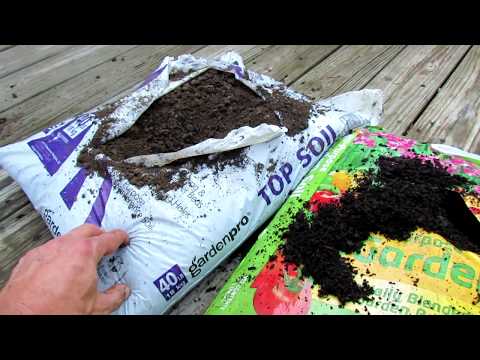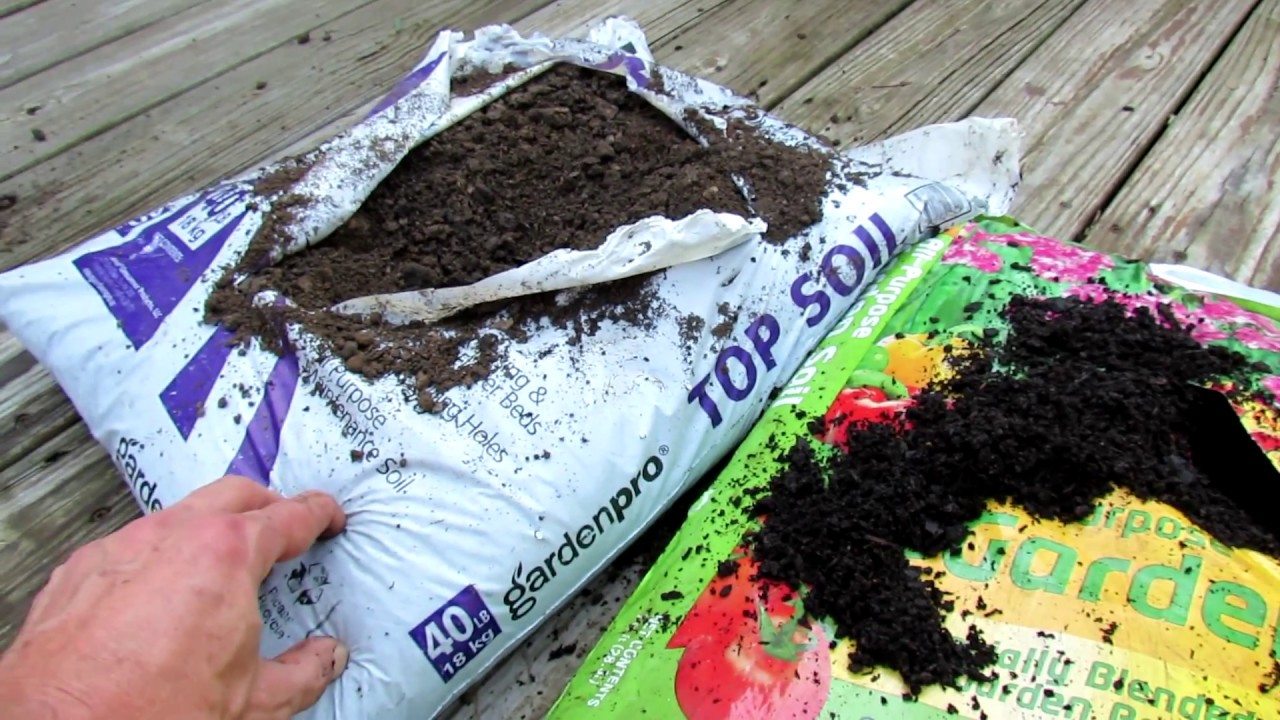Topsoil is the key to a thriving garden and lush green landscapes. This nutrient-rich layer of soil is teeming with life, providing the perfect foundation for plants to flourish. Topsoil is the uppermost layer of soil, and it is packed with organic matter, minerals, and beneficial microorganisms that support plant growth. Whether you are an avid gardener or simply want to enhance the beauty of your outdoor space, understanding the significance of topsoil is crucial. Imagine a garden where plants grow effortlessly, boasting vibrant colors and robust foliage. This is precisely what topsoil offers. It acts as a reservoir for essential nutrients, ensuring that plants receive the nourishment they need to thrive. Additionally, topsoil helps retain moisture, preventing dehydration during dry spells and reducing the frequency of watering. By enriching your garden with this valuable resource, you can save time and effort while promoting healthier plants. Furthermore, topsoil plays a vital role in soil structure and drainage. Its composition allows for proper aeration, preventing waterlogging and root rot. This ensures that plants have access to oxygen, encouraging strong root development and overall plant resilience. Additionally, the diverse microbial community found in topsoil helps break down organic matter, releasing essential nutrients and improving soil fertility. In summary, topsoil is the essential ingredient for any successful garden. Its nutrient-rich composition, moisture retention properties, and ability to support root development make it an invaluable resource for plant growth. With topsoil, you can transform your outdoor space into a thriving oasis, brimming with life and natural beauty.

Top Soil: Understanding the Lifeblood of Productive Land
| Aspect | Description |
|---|---|
| Composition | Top soil is the uppermost layer of soil, typically ranging from 2 to 8 inches in depth. It is a rich and fertile medium composed of a combination of organic matter, minerals, water, air, and countless microorganisms. |
| Organic Matter | Top soil contains a significant amount of decomposed plant and animal material, such as leaves, bark, dead insects, and microbial biomass. This organic matter provides essential nutrients, improves soil structure, and enhances water retention capabilities. |
| Mineral Content | Top soil is characterized by its diverse mineral content. It contains various essential nutrients like nitrogen, phosphorus, and potassium, along with trace elements necessary for plant growth. These minerals originate from weathered rocks and minerals present in the parent material. |
| Water Retention | Top soil exhibits excellent water-holding capacity due to its fine texture and organic matter content. It can retain moisture for extended periods, ensuring plants have a continuous supply of water even during dry spells. This is crucial for healthy plant growth and resilience. |
| Aeration | The structure of top soil allows for adequate aeration, facilitating the exchange of gases between the soil and the atmosphere. This oxygen supply is vital for the survival of soil organisms, root respiration, and the overall health of plants. |
| Soil Microorganisms | Top soil is teeming with an immense diversity of microorganisms, including bacteria, fungi, protozoa, and nematodes. These organisms play a crucial role in nutrient cycling, decomposition of organic matter, and disease suppression, ultimately contributing to the soil’s fertility and health. |
| Ecosystem Support | Top soil serves as the foundation for terrestrial ecosystems, supporting a wide array of plant and animal life. Its richness and fertility support the growth of crops, forests, and grasslands, providing food, shelter, and habitat for countless organisms. |
Unraveling the Secrets of Soil: Topsoil, Garden Soil, Raised Bed Soil, and Potting Mix
What is Top Soil?
Top soil is the uppermost layer of soil found on the Earth’s surface, typically ranging from 2 to 8 inches in depth. It is a crucial component of the Earth’s ecosystem as it supports the growth of plants and provides essential nutrients for their development. Top soil is formed over thousands of years through the natural process of weathering and organic matter decomposition.
The Composition of Top Soil
Top soil is a complex mixture consisting of minerals, organic matter, water, air, and living organisms. Minerals such as sand, silt, and clay make up the inorganic portion, providing the soil with different textures and properties. Organic matter, which includes decomposed plant and animal material, gives top soil its dark color and nutrient-rich composition. Water and air fill the spaces between the soil particles, allowing roots to absorb nutrients and facilitating the exchange of gases with the atmosphere. Lastly, living organisms like bacteria, fungi, earthworms, and insects contribute to the decomposition of organic matter and the overall health of the soil.
The Importance of Top Soil
Top soil plays a critical role in sustaining life on Earth. Here are five compelling reasons why it is essential:
1. Nutrient Supply
Top soil is the primary source of nutrients for plants. It contains essential elements such as nitrogen, phosphorus, and potassium, which are vital for plant growth and development. Without an adequate supply of nutrients, plants cannot thrive and produce the food we rely on.
2. Water Retention
Top soil has excellent water retention properties. It can absorb and hold water, allowing it to be available to plants for extended periods. This is crucial during dry periods or in regions with limited water resources. The water-holding capacity of top soil helps plants survive and maintain their metabolic processes.
3. Erosion Prevention
Top soil acts as a protective layer against erosion. Its composition and structure allow it to resist the forces of wind and water, preventing the loss of soil particles. When top soil erodes, it not only degrades agricultural productivity but also leads to sedimentation in water bodies, negatively impacting aquatic ecosystems.
4. Carbon Sequestration
Top soil plays a crucial role in carbon sequestration, helping to mitigate climate change. Organic matter present in the soil absorbs and stores carbon dioxide from the atmosphere, reducing its concentration and contributing to the regulation of the Earth’s climate. Maintaining healthy top soil is essential for maximizing carbon sequestration potential.
5. Biodiversity Support
Top soil is teeming with diverse forms of life, including microorganisms, insects, and earthworms. These organisms contribute to the breakdown of organic matter, nutrient cycling, and soil structure improvement. They also create a hospitable environment for plant roots, promoting their growth and enhancing overall biodiversity in terrestrial ecosystems.
Preserving and Restoring Top Soil
Preserving and restoring top soil is crucial for maintaining a healthy and productive environment. Here are some practices that can help:
1. Crop Rotation
Crop rotation involves alternating the types of crops grown in a particular area over time. This practice helps prevent the depletion of specific nutrients, reduces the risk of pests and diseases, and improves overall soil health. By diversifying the crops, farmers can maintain the fertility and structure of the top soil.
2. Cover Cropping
Cover cropping involves planting specific crops during fallow periods to protect and nourish the top soil. These crops, such as legumes and grasses, help prevent erosion, improve soil structure, and enhance nutrient availability. Cover cropping also reduces the need for synthetic fertilizers and pesticides, promoting a more sustainable agricultural system.
3. Composting
Composting is the process of decomposing organic waste materials such as food scraps, yard trimmings, and animal manure. Compost, rich in nutrients and organic matter, can be added to top soil to improve its fertility and structure. It also helps retain moisture, suppress weeds, and enhances microbial activity, leading to healthier soil for plant growth.
4. Conservation Tillage
Conservation tillage involves minimizing soil disturbance during planting and cultivation. By reducing or eliminating plowing, farmers can preserve the structure of top soil, prevent erosion, and promote water infiltration. Conservation tillage practices, such as no-till farming, help maintain the integrity and health of the soil while reducing energy consumption and greenhouse gas emissions.
5. Soil Testing and Monitoring
Regular soil testing and monitoring allow farmers and gardeners to assess the nutrient content and pH levels of the top soil. By understanding the soil’s composition, necessary adjustments can be made through targeted fertilization and pH balancing. Soil testing also helps identify potential issues early on, enabling prompt corrective action to maintain soil health.
Conclusion
Top soil is a precious and finite resource that sustains life on Earth. Its composition, nutrient content, and structure are vital for the growth and development of plants. Preserving and restoring top soil is crucial for maintaining agricultural productivity, preventing erosion, mitigating climate change, and supporting biodiversity. By implementing sustainable practices, we can ensure the long-term health and viability of top soil for future generations.

